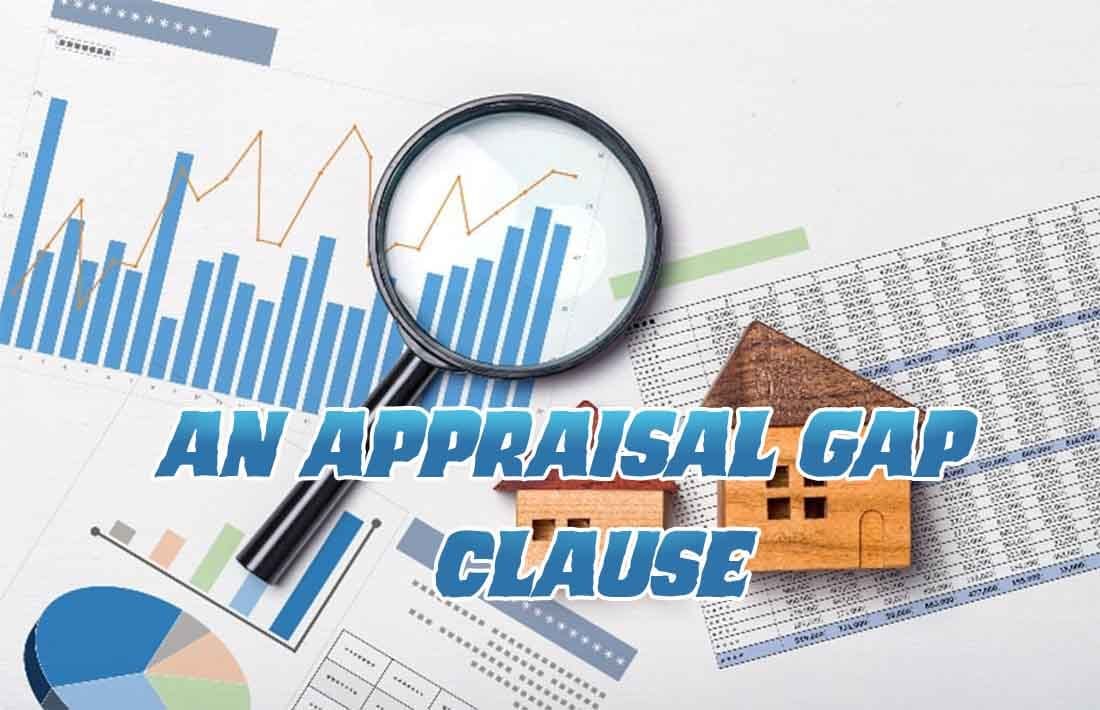In the volatile world of real estate, the Appraisal Gap Clause can make or break your home-buying journey. It’s the unsung hero ensuring your dream home doesn’t slip away due to appraisal discrepancies. Let’s explore its significance and how it works.
The Basics: What Exactly Is an Appraisal Gap Clause?
Defining the Appraisal Gap Clause
An Appraisal Gap Clause is a provision in a real estate contract where the buyer agrees to cover the difference if the home’s appraised value falls short of the agreed purchase price. This clause can prevent a deal from falling apart due to appraisal issues.
Why Should You Care About an Appraisal Gap Clause?
Benefits of Including an Appraisal Gap Clause
Having this clause in your contract shows sellers you’re serious, which can make your offer stand out in a competitive market. It also ensures that a lower-than-expected appraisal won’t derail your purchase plans.
How Does an Appraisal Gap Clause Work?
The Mechanics of an Appraisal Gap Clause
Here’s how it functions: If you agree to buy a house for $300,000, but the appraisal comes in at $290,000, the Appraisal Gap Clause states you’ll cover the $10,000 difference. This keeps the deal intact without renegotiation.
When Do You Need an Appraisal Gap Clause?
Situations Requiring an Appraisal Gap Clause
You’ll need this clause in a seller’s market, where bidding wars drive up prices faster than appraisals can keep up. It’s particularly beneficial when you’re competing for highly sought-after properties.
Home Buying: The Wild West of Appraisals
Navigating the Appraisal Process
Buying a home can feel like navigating the Wild West, especially when appraisals don’t match the market’s rapid pace. Appraisals often come in lower than expected, creating a standoff between buyers and sellers.
Common Scenarios: When Appraisal Gap Clauses Save the Day
Real-World Examples of Appraisal Gap Clauses in Action
Imagine you’re in a bidding war and offer above the asking price, but the appraisal lags behind. Or, you’re eyeing a unique property with few comparables, confusing the appraiser. In these scenarios, an Appraisal Gap Clause ensures the deal proceeds smoothly.
The Financial Safety Net: Protecting Your Wallet with an Appraisal Gap Clause
Financial Benefits of an Appraisal Gap Clause
An Appraisal Gap Clause acts as a financial safety net, providing peace of mind that a low appraisal won’t scuttle your deal or strain your finances. It ensures you can move forward without renegotiation or risking your earnest money.
The Legal Jargon: What’s Actually in an Appraisal Gap Clause?
Key Components of an Appraisal Gap Clause
The clause typically includes the buyer’s agreement to cover a specific amount over the appraised value, not exceeding the purchase price. It may also detail how the difference will be paid, either through additional cash at closing or adjusted loan terms.
Negotiation Tactics: How to Include an Appraisal Gap Clause in Your Offer
Strategies for Effective Negotiation
To include an Appraisal Gap Clause, be clear and specific about the maximum amount you’re willing to cover and under what conditions. This transparency can make your offer more appealing to sellers and give you an edge in competitive markets.
Pitfalls to Avoid: Common Mistakes with Appraisal Gap Clauses
Avoiding Common Errors
Avoid overcommitting financially, being vague about terms, and not consulting your lender. Ensuring clarity and feasibility will help your clause work in your favor, rather than against you.
Real-Life Drama: Stories of Appraisal Gap Clauses in Action
Success Stories with Appraisal Gap Clauses
Meet Jane and John, first-time homebuyers in a bidding war. They included an Appraisal Gap Clause, covering up to $10,000 above the appraisal. When the appraisal came in $8,000 short, their clause saved the deal, securing their dream home.
Expert Opinions: What the Pros Say About Appraisal Gap Clauses
Professional Insights on Appraisal Gap Clauses
Real estate experts consider the Appraisal Gap Clause a crucial tool. Realtors praise its ability to make offers more attractive, mortgage brokers highlight its role in smoothing financing issues, and appraisers appreciate the clarity it brings.
Frequently Asked Questions (FAQs)
Addressing Common Questions
How Much Can an Appraisal Gap Clause Cover?
Typically, buyers specify an amount or percentage they’re willing to cover above the appraisal.
Can Sellers Reject an Appraisal Gap Clause?
Yes, but in competitive markets, a clause can make your offer more attractive.
Does an Appraisal Gap Clause Affect Mortgage Approval?
It can. Lenders need assurance you can cover the gap, so keep your finances in order and communicate with your lender.
Comparing Appraisal Gap Clauses to Other Real Estate Clauses
Understanding the Differences
Unlike inspection or financing contingencies, an Appraisal Gap Clause specifically addresses appraisal shortfalls. It’s a proactive measure, whereas other clauses react to issues arising during the process, forming a comprehensive safety net together.
Future Trends: Are Appraisal Gap Clauses Here to Stay?
The Future of Appraisal Gap Clauses in Real Estate
Given current market dynamics, appraisal gap clauses are more relevant than ever. As real estate evolves, these clauses are likely to become standard practice, ensuring smooth transactions despite appraisal challenges.
BOTTOM LINE
Final Thoughts on Appraisal Gap Clauses
The Appraisal Gap Clause is a powerful tool in the home-buying arsenal. It protects your deal, showcases your seriousness, and provides financial peace of mind. With this knowledge, you’re ready to navigate the real estate market confidently. Happy house hunting!
Additional questions
What Is an Appraisal Buffer?
An appraisal buffer is an additional amount of money set aside to cover any discrepancies between the appraised value of a property and the agreed purchase price. This buffer acts as a financial cushion, ensuring that the deal can proceed smoothly even if the appraisal comes in lower than expected. It provides buyers with the flexibility to cover the difference without renegotiating the terms or risking the deal falling apart.
What Is a Short Appraisal?
A short appraisal occurs when the appraised value of a property is less than the agreed-upon purchase price. This situation can complicate the home-buying process, as lenders typically base the loan amount on the appraised value. A short appraisal means the buyer might need to come up with additional funds to cover the gap or renegotiate the purchase price with the seller.
What Is the 10% Buffer?
The 10% buffer refers to a common practice in real estate transactions where buyers set aside an extra 10% of the purchase price to cover any potential appraisal shortfalls. This buffer ensures that buyers have enough funds to cover the difference between the appraised value and the purchase price, preventing the deal from falling through due to a lower-than-expected appraisal.
What Is the Buffer Rate?
The buffer rate in real estate refers to a percentage added to the appraised value to account for potential fluctuations in market conditions or appraisal inaccuracies. This rate provides a safety net, ensuring that buyers and lenders have a margin of error to work with. The buffer rate can vary depending on market conditions, lender policies, and the specifics of the transaction.
What Are the Three Main Types of Appraisals?
Market Value Appraisal
A market value appraisal determines the current value of a property based on comparable sales in the area, market conditions, and property features. This type of appraisal is commonly used in real estate transactions to establish the fair market value of a property.
Cost Appraisal
A cost appraisal estimates the value of a property based on the cost of replacing it with a similar one. This includes the cost of construction, materials, and labor, minus any depreciation. Cost appraisals are often used for new constructions or unique properties where comparable sales data is limited.
Income Appraisal
An income appraisal evaluates the value of a property based on its potential to generate income. This method is typically used for investment properties, such as rental units or commercial buildings. The appraiser considers the property’s income, expenses, and potential return on investment to determine its value.








